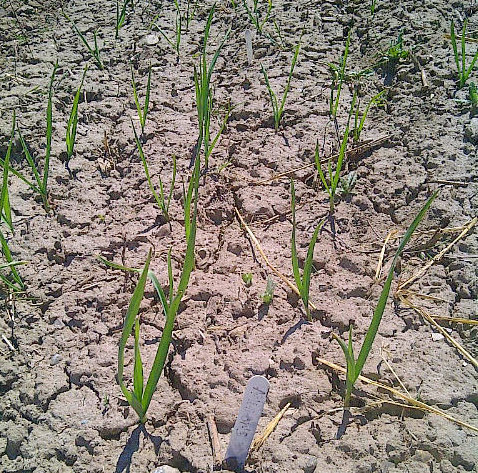Saving Our Garlic Collection

Paul Hrycyk
The incredible range of characteristics we see in the plants in our gardens is determined by complex genetic material. For most vegetables, that material is stored in a seed – a compact and hardened package that can be saved and grown out many years later. But for clonally propagated crops like garlic that aren't grown from seeds, there’s no such thing as long-term storage.
The following summer, we harvest the bulbs and bulbils from each variety, record observations, and then choose 24 of the best cloves of each variety to replant later that year. This is the only way to maintain a viable garlic collection. If we did not replant each variety every year, the cloves dry out or rot, and that variety would no longer be in our collection. This means that the process of maintaining a garlic collection is quite a bit more work than, say, growing out 20 tomato plants every 5-7 years.
There are, however, a couple things we do to make the collection a bit less vulnerable. One, we share the remaining cloves of each year’s harvest with other growers, with the goal of spreading these varieties across the country to further back-up our collection, and to provide interesting varieties of garlic to Canadians. Two, we harvest and carefully store garlic bulbils every year. Bulbils – the “mini cloves” that are found at the end of the scape – store well and can also be planted. Each bulbil grows into a clove, which can then be replanted and grown into a whole bulb the following year. The process takes an extra year and a bit more work, but it’s a worthwhile system to mitigate losing varieties in case the garlic planted in the field does not grow well.
We have learned the importance of keeping a back-up collection of bulbils from experience. During the 2014-2015 garlic year, our field garlic experienced difficult growing conditions and the strain showed when it came time to harvest. Whereas in previous years we often harvested 22 or more healthy bulbs from the original 24 that we had planted, in 2015 we were only able to harvest 10 or fewer small bulbs for a number of varieties, and we lost some varieties entirely. Luckily, we had bulbils of most of the affected varieties from the previous year, and were able to offset our losses in the field by planting bulbils in pots in a greenhouse. We will move the baby plants to the field this year, and by next year our garlic collection should be back to its original size and strength. However, experiences such as this are a stark reminder that redundancy is necessary when maintaining clonal collections like garlic.
This year we are growing out our garlic in a new location. In 2015, we developed a new partnership with KW Habilitation, a local non-profit organization that supports children and adults with developmental disabilities. Their Our Farm initiative aims to build community, increase knowledge of sustainable gardening, and grow organic food, and we’re delighted to be growing out our garlic collection on their land. In exchange, we will be conducting seed saving workshops for project participants. So far, the garlic is up and seems to be loving its new home!
Watch out for more updates – when we harvest the bulbs in August we should have lots to share, and we would love your help to further protect our valuable collection!
Not yet a member?
An annual membership to Seeds of Diversity gives you access to our seed exchange, seed grow-out programs, and our online news.

We depend on donations to do our work.

Thank you for your support!
